Save kids’ resale: The charitable/job assistance giant has its annual advocacy day in Washington, D.C. tomorrow, where it will recommend “that Congress pass legislation that excludes used children’s products from the CPSIA” (more; via ShopFloor; our earlier coverage of CPSIA and resale).
Posts Tagged ‘CPSIA and resale’
CPSIA chronicles, April 21
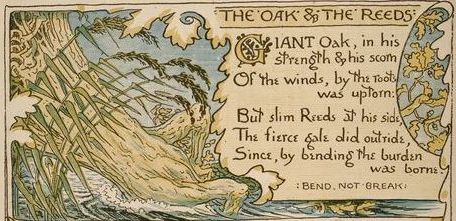
- Did you know that you can use the advanced search function at the SEC’s EDGAR database to track some of the losses in the business world from the Consumer Product Safety Improvement Act? (h/t Sunny Day Notes). Thus the Dollar General chain reveals in a 10-k filing that it took a charge of $8.6 million due to the sudden loss of value of merchandise early this year when a court reinstated CPSIA’s retroactive ban on phthalates in children’s playthings. Mark Riffey also suggests Google searches combining 10-K with CPSIA. (More on the countable costs).
- “A Quick Guide To What’s Wrong with the CPSIA” by leading reform activist Rick Woldenberg is more a jumping-off point for discussion than a finished bill of particulars — it doesn’t bring up the needless burdens of the law’s testing regime, for example. And it argues for more reasonable implementation without really taking issue on principle with the wisdom of the law. But it does have the advantage of being couched in the sort of Washington language a legislative staffer might be willing to take to colleagues.
- Speaking of quick guides, Carol Baicker-McKee has done up a two-page fact sheet on the need to fix CPSIA before it does more harm on the vintage-books front. Valerie Jacobsen polled both sellers and buyers in the homeschool market for used children’s literature and found that nearly all the buyers, and for the time being most of the sellers, were ignoring the CPSC guidelines that discourage most resale of pre-1985 volumes. Deputy Headmistress had a great post last month summing up reactions on the vintage-books front from David Niall Wilson, Amy Ridenour, Zodi @ Tim & Zodi, and less admirably, Consumer Reports/Consumers Union (which seems to be perfectly fine with the law’s effects). And did you know there’s a displayable sidebar widget of “CPSIA Endangered Books” based on the Flickr group with that theme?
- I am sorry to say I believe the story Jacobsen told at her site last month:
I just had an interesting conversation with Jared at the Senate Commerce Committee at 202-224-5115. Jared told me that the Commerce Committee had been unaware that pre-1985 children’s books (he knew about that restriction already) would still have commercial importance and ongoing value for children’s use. … Jared asked a lot of questions and twice expressed that it was new information “to the Committee” that these books still have any market importance.
The comments section to that post is a particularly good one for those interested in the fate of vintage children’s books or in the attitudes widely held on Capitol Hill; see also Deputy Headmistress.
- Not a good sign: the Obama/Biden campaign took a simplistic “ban ’em all” view on CPSIA issues in its document “Barack Obama: A Champion for Children” (PDF) And (h/t Mark Riffey) it was two and a half years ago that Rep. Henry Waxman and then-Sen. Obama reached for headlines by blasting the U.S. Capitol gift shops over its sale of trinkets and souvenirs containing lead — no need for careful distinctions about which such items if any might present actual, material hazards and which do not. (Dec. 11, 2006 announcement).
- Rain boots, buttons, Dr. Seuss: What passed and what didn’t when the owner of a Chicago-area resale store did x-ray fluorescence (XRF) testing to detect lead levels in many vintage kids’ products [From My Room]
- Pete Warden’s neat Mailana venture (among other functions) will analyze a group of Twitter connections to detect patterns. It indicates that of the 1,300+ persons now following @walterolson on that service, the two most distinctly identifiable social clusters are toymakers and lawyers. I feel torn sometimes between the North Pole and a hot place.
Public domain image courtesy ChildrensLibrary.org: Walter Crane, illustrator, The Baby’s Aesop (1887)
CPSIA: Things I learned at the rally
Last Wednesday’s CPSIA rally at the Capitol drew an overflow crowd of hundreds, with thousands more reportedly watching from around the world via webcast. Many speakers had powerful stories to tell, and cameras from CNN and ABC were on hand to record them; AP mentioned the event in covering the dirtbike-ban story. There is, as you might imagine, no way to upstage a six-year-old motocross champion who declares from the podium, “I promise I won’t eat my dirt bike”.
A few things I learned by attending:
- Ordinary bikes (not the motorized kind) are clearly out of compliance with the law because of the leaded brass in certain components, and have been given no exemption. I’m still wondering why the CPSC directed the motorbike dealers to tarp over their inventory but did not do the same with the ordinary-bike dealers. Earlier here; much more (PDF) in this CPSC submission by Mayer Brown for the Bicycle Product Suppliers Association.
- Until I saw their handout leaflet, it hadn’t sunk in that the non-profit and charitable giants in resale, including Goodwill, Salvation Army, Easter Seals, Volunteers of America, and St. Vincent de Paul, have banded together in a Donated Goods Coalition. Good for them, and I hope someone listens.
- Even blogging the subject as much as I have, I’ve somehow said almost nothing about CPSIA’s requirements for batch numbering, labeling and tracking of kids’ products, due to hit later this year. It seems these requirements all by themselves will suffice to wipe out small producers in droves even if the crazy testing requirements can somehow be made sane. A few write-ups touching on the subject: Handmade Toy Alliance (Word document), Kathleen Fasanella/Fashion Incubator, Publisher’s Weekly.
- The rally happened because of the efforts of grass-roots business people around the country, above all Rick Woldenberg of Learning Resources. (The story of the Oregon delegation could stand for that of many others.) Motorbike people were much in evidence. Also present: people from trade associations from regular businesses not been much heard from in the CPSIA furor of recent months, including makers of shoes and footwear, cribs, and even household cleansers, all of whom turned out to have stories to tell. Who knew there was a whole association specializing in the little items you get when you put in the quarter in the vending machine and turn the crank?
- Kids’-book author (and valued commenter) Carol Baicker-McKee was there and gave a superb talk, making effective use of a copy of Orwell’s 1984. Otherwise, however, among groups deeply affected by the legislation, the book and library trades were conspicuous by their absence. I wasn’t the only one who noticed this; so did Publisher’s Weekly.
- I finally got to meet face to face many persons who have been favorably mentioned in these columns over the past three months. I was not surprised to find a whole lot of nice, dedicated people, the sort of people you’d want to be making products for your children to use. You, Reader, would have enjoyed meeting them too.
- Many members of Congress spoke. All were Republican, and a few were pretty good. For better or worse (maybe some of each) there was a minimum of partisanship, with scant mention of the reports that the Democratic House leadership had ordered members not to attend. Several lawmakers minimized the institutional role in the debacle of Congress (which passed the law last year almost unanimously), instead seeking to throw the blame onto the CPSC’s management, which put them surprisingly close to the position of Henry Waxman himself. One GOP member said it was important to be nice to the Democrats and not alienate them, since they held all the power.
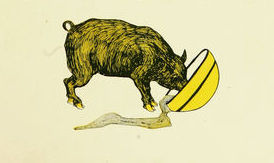 This may have been good advice, but I was still a little surprised.
This may have been good advice, but I was still a little surprised. - Amid a great deal of talk about unintended consequences, very little was said about there being actual adversaries out there, who know quite well what the law is doing and support it anyway. If more than a word or two was breathed about the roles of Public Citizen, PIRG, or the various members of Congress who are actively hostile on the issue (and not just “needing to be educated”), I missed it. Which meant (it seemed to me) that some of the good people who’d taken the trouble to come to Washington were going to be surprised and perhaps unprepared when they discovered figures out there like, oh, just to pick randomly, Illinois Sen. Dick Durbin, whose positions are not so much unreflected-on as deeply hostile (and with mysteriously unsourced numbers too).
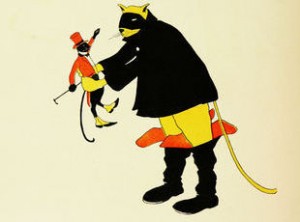
Speaking of which, Consumers Union, publisher of Consumers Reports, confirmed once again that it falls into the “hostile” and not merely “unreflective/ uninformed” category with this deplorable hatchet job, which provoked a slew of angry, substantive comments; see also blog posts including those of Carol Baicker-McKee and Sheeshamunga.
More rally coverage: Domestic Diva, Polka Dot Patch.
Public domain image: Yankee Mother Goose (1902), illustrator Ella S. Brison, courtesy ChildrensLibrary.org.
NPR on CPSIA: “Public Concern, Not Science, Prompts Plastics Ban”
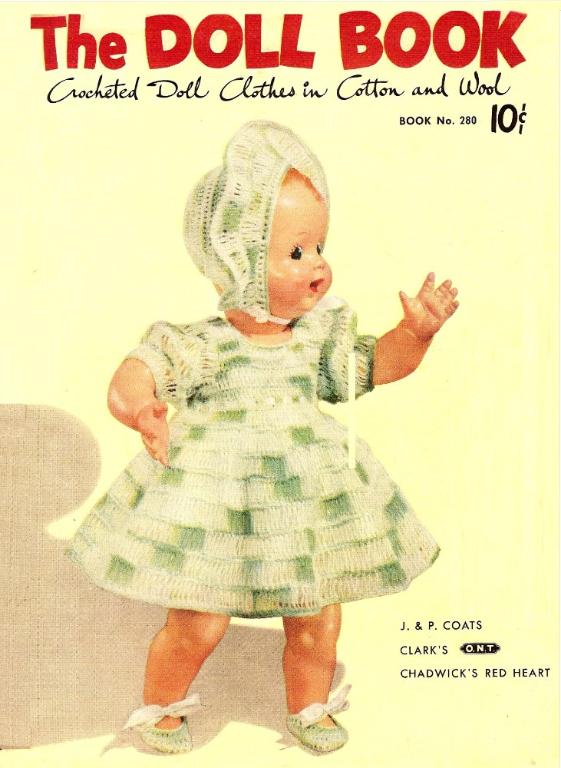
Major story by Jon Hamilton on yesterday’s NPR “Morning Edition”: “A new federal ban on chemical compounds used in rubber duckies and other toys isn’t necessary, say the government scientists who studied the problem.” “Now they tell us,” writes Carter Wood. More from Jonathan Adler @ Volokh and commenters.
Although most coverage of the CPSIA debacle (this site’s included) has focused on the lead rules, the phthalates ban (phthalates are an ingredient often used to make plastic soft and bendable) is also extraordinarily burdensome, for a number of reasons: 1) as readers may recall, a successful lawsuit by the Natural Resources Defense Council and others forced the last-minute retroactive banning of already-existing playthings and child care items, costing business billions in inventory and other losses; 2) vast numbers of vintage dolls, board games and other existing playthings are noncompliant, which means they cannot legally be resold even at garage sales, let alone thrift or consignment shops, and are marked for landfills instead; 3) obligatory lab testing to prove the non-presence of phthalates in newly made items is even more expensive than testing to prove the non-presence of lead. The phthalate ban is also an important contributor to the burden of the law on the apparel industry (the ingredient has often been used in screen printing on t-shirts and similar items) and books (“book-plus” items with play value often have plastic components). AmendTheCPSIA.com has reprinted a letter from Robert Dawson of Good Times Inc., an amusement maker.
Earlier coverage: Feb. 6 (NRDC and allies win court case on retroactivity); Feb. 7 (various points, including Connecticut Attorney General Richard Blumenthal’s vow that his office will “take whatever steps are necessary [emphasis added] to ensure this phthalate ban is enforced”); Feb. 12 (what ingredients in playthings are going to replace phthalates, and are those ingredients going to be more safe or less?); Mar. 4 (vintage dolls); Mar. 11 (California Senators Barbara Boxer and Dianne Feinstein were particularly identified with pushing the phthalates ban to enactment).
P.S. Environmentalists disputing the NPR coverage: Jennifer & Jeremiah @ ZRecommends, Jennifer Taggart (The Smart Mama) in NPR comments. And Sacramento attorney Anthony Caso has a backgrounder for the Washington Legal Foundation (PDF) with more about the CPSC, the NRDC, and maneuvering on phthalates.
CPSIA chronicles, March 30
- We all know that politicians’ sententious pronouncements about the needs of the poor often ring hollow. But are our elected officials truly unaware of the role thrift shops play in the lives of those trying to raise families with no margin of financial safety? Valerie Jacobsen and Deputy Headmistress have both blogged movingly on the subject, and the latter is back today with a must-read post recalling the morning when her own family unexpectedly expanded through adoption overnight from three children to five:
We had no clothes for them, no beds, no presents; nothing was in readiness for them, except our hearts (and even those needed some sprucing up). They came on a Friday. We went shopping on a Saturday. Where did we go shopping? Thrift shops, of course. We had an immediate and urgent need for clothing, toys, and bedding for two new children, and we lived on an enlisted man’s salary. It was only two weeks before Christmas. The thrift shop enabled us to fill the gap between our income and our needs.
Now families that rely on thrift stores are in trouble from coast to coast: Salem and Marblehead, Mass. (“Throwing away perfectly good clothing”); Nantucket, Mass. (imagine being a landscaper or laundry person trying to raise a kid on that expensive island); Herkimer, N.Y. (“new motto, ‘When in doubt, throw it out'”); Beaver County, Pa.; Imperial, Neb.; Denver, Colo.; San Luis Obispo, Calif. (“I say, ‘Just try to pass the toys down through your family or give them to friends,’”); The Garden Island (Kauai, Hawaii)(via CLC and CPSIA). Some background from NARTS (National Association of Resale and Thrift Shops), which is doing a CPSIA Impact Survey of its members.
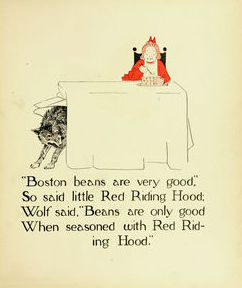
- The Wall Street Journal editorializes about the law again today, aiming its main attack at House Speaker Nancy Pelosi, who “won’t admit a mistake and fix the law“.
- Quite the video on the minibike ban, with youth road racing champion Josh Serne, at AmendTheCPSIA.com. Amateur MX has photos from the Malcolm Smith rally. More powersports coverage: Rochester area, N.Y.; Albany/Hudson Valley, N.Y.; McHenry County, Ill.; Associated Press.
- James Leroy Wilson at DownsizeDC: “What is Congress doing about it? Canceling hearings.” And Amy Ridenour, National Center: “Outrage of the Day: Waxman Drags Feet on Needed CPSIA Reform”.
- “It’s on the books, and that’s the problem for libraries across North Texas,” reported Dallas’s CBS 11 earlier this month (via Rick Woldenberg). Per Fox Albany, the Albany Public Library and the library in suburban Guilderland each estimate that they would have to discard around 10,000 older children’s books if an exemption is not made available. Guilderland library director Barbara Nichols Randall says her institution on average weeds out about 1,600 books a year on average currently, which of course does not mean that they exclusively target the oldest books for weeding. Albany library director Timothy Burke foresees the results at his library as “10,000 fewer books for kids to use”.
- Carter Wood at ShopFloor thinks what’s happening with vintage books is reenacting the story of the Velveteen Rabbit:
And so the little Rabbit was put into a sack with the old picture-books and a lot of rubbish, and carried out to the end of the garden behind the fowl-house. That was a fine place to make a bonfire, only the gardener was too busy just then to attend to it. He had the potatoes to dig and the green peas to gather, but next morning he promised to come quite early and burn the whole lot.
- Candy Corn Studios makes an important point: “Children have access to dozens of small items that were never intended for children.” If grandpa takes the kids out fishing, there’s no law (yet) forcing him to keep the lead sinkers in his tackle kit under lock and key. Meanwhile, purely notional risks that have never been linked to any real-world instances of poisoning are used as the excuse for turning real people’s lives compulsorily upside down.
- Attorneys Michael B. Goldsmith and Jay L. Silverberg of Sills Cummis: “No legislation in recent memory has engendered more confusion and consternation than the Consumer Product Safety Improvement Act of 2008… There continues to be tremendous disruption, confusion and concern in a variety of industries affected by the CPSIA.” Meanwhile, U.S. Sen. Dick Durbin (D-Ill.), a long-time non-favorite at this site, thinks the main problem with the law is that it’s not being enforced enthusiastically enough.
- And don’t forget the rally in Washington Wednesday (buttons and banners, list of rally speakers, including many familiar from this space).

CPSIA: a scorecard of reform bills

Carter Wood at ShopFloor has a very useful compilation of what are probably all the current bills introduced in Congress related to the Consumer Product Safety Improvement Act. (More, of course, may follow as the crisis continues.) Of the 10 bills, one is an omnibus appropriation bill, while the other nine (six in the House, three in the Senate) all appear from their descriptions to be aimed at reforming the substance of the law, its timetables and deadlines, or both.
Significantly, there was introduced this week the first bill with a Democratic (i.e. majority) sponsor, a bill by Montana Democratic Senator Jon Tester to overturn the dirtbike ban.
The three bills in the Senate are S. 608, the Tester bill on motorcycles and related vehicles; S. 374, the much-discussed bill by Sen. Jim DeMint (R-S.C.) that would have injected common sense into several areas of the law, and which Congress (under pressure from Public Citizen and others) refused to incorporate into the stimulus package; and S. 389, a bill introduced by Sen. Robert Bennett (R-Utah) “to establish a conditional stay of the ban on lead in children’s products, and for other purposes.”
The six bills in the House are H.R. 1510 and H.R. 1587, introduced by Denny Rehberg (R-Mont.), both relating to cycles/vehicles; H.R. 968, by John Shadegg (R-Ariz.) and H.R. 1465, by Brad Ellsworth (D-Ind.), both of which are described as providing “regulatory relief to small and family-owned businesses”; H.R. 1046, by Adam Putnam (R-Fla.), to “ensure the effective implementation of children’s product safety standards under the Consumer Product Safety Improvement Act of 2008”, and H.R. 1027, by Bill Posey (R-Fla.), to “exempt second-hand sellers of certain products from the lead content and certification requirements”.
CORRECTION: I erroneously listed Indiana Congressman Brad Ellsworth above as a Republican, but he is a Democrat; fixed now.
CPSIA: “We are sorry to report…”
Fewer options for kids in Santa Rosa, California:
We are sorry to report that Eleven 11 Kids has been forced to close its doors as of February 10, 2009 due to the new federal children’s environmental law, CPSIA, (HR4040) that went into effect on 2/10/09.
And then the store explains in some detail why it felt it had to close. It is too polite, perhaps, to mention that both California senators, Barbara Boxer and Dianne Feinstein, played prominent roles in getting CPSIA passed, with Boxer in particular pushing the retroactive phthalates ban that has been notably harmful to resellers.

At ShopFloor, Carter Wood writes that the Senate version of the bill was (even) more extreme in its provisions than the House version, and that the Senate version unfortunately “wound up playing a bigger role in the writing of the final bill”. The Hospice of Amador and Calaveras Thrift Store, in California’s Sierra Nevada, is still operating but has stopped carrying children’s items.
In Ellensburg, Washington, north of Yakima, Cheryl Smith was “living the American dream” with her store Hailina’s Closet, which “opened last April and [sold] gently used children’s clothing and toys.” But it is just a memory now. The Kitsap Sun reported that Perfect Circle, a Bremerton children’s consignment store, also had to go out of business.
A few more reports from Goodwill: Roanoke, Virginia, Le Mars, Iowa (rare good news, some items being put back on shelves), Rock County, Wisconsin.
CPSIA: throwing away 500 stuffed animals
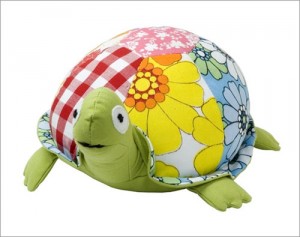 No, discarding 500 once-loved stuffed animals doesn’t really amount to much of a story amid scenes of billion-dollar disruptions caused by this law elsewhere around the country. But if you’re one of the people who run the Second Fling consignment shop in Goldsboro, N.C., it might still seem kind of sad.
No, discarding 500 once-loved stuffed animals doesn’t really amount to much of a story amid scenes of billion-dollar disruptions caused by this law elsewhere around the country. But if you’re one of the people who run the Second Fling consignment shop in Goldsboro, N.C., it might still seem kind of sad.
CPSIA hits Martha’s Vineyard
When you live on an island, resale can be a lifeline:
At a time when the crumbling national economy is forcing many Vineyard families to seek bargains on kids’ clothing, toys and games, both Island thrift stores have been forced to throw away nearly their entire inventory of children’s items due to a new federal law designed to protect children from lead products. …the second-hand stores in Tisbury and Edgartown this week cleared their stores of children’s merchandise in dismay. …
Both the Martha’s Vineyard Second Hand Store in Edgartown, run by the Island chapter of the Boys’ and Girls’ Club, and the Thrift Shop in Vineyard Haven, run by the Martha’s Vineyard Community Services, have been forced to throw away hundreds or perhaps thousands of children’s items with potentially lead-carrying zippers, buttons, painted fabrics or decals.
“We had to clear out the toys, the kids’ clothing, the dolls . . . everything had to go,” said Dolly Campbell, assistant manager of the Vineyard Haven Thrift Shop, painting a scene straight out of Dr. Seuss’s How the Grinch Stole Christmas. “I understand why they passed the law, but they didn’t think it out very well. Now we don’t have any toys or children’s clothing for families in need. What kind of sense does that make?”
The director of the Edgartown store is aware of the law’s restraints on giving away inventory that cannot be sold, but confides that she quietly let people know the things were out in the trash just in case they might want to take it when she wasn’t looking.
“What’s next? Will we no longer be able to say hello to our neighbors? Does this law make the world a better place? I don’t think so,” she said.
Read the whole thing (Jim Hickey, Martha’s Vineyard Gazette). And (via incoming links, which themselves have a serendipitous quality much like thrift stores) here’s a picture from The Magic Bus, 1948; and a third entry in the series on vintage kids’ books by Carol Baicker-McKee.
CPSIA chronicles, March 4
[Broken link on CPSC surveillance program fixed now.]
- The internet is a-hum with reactions to a proposal by West Virginia state representative Jeff Eldridge (D-Big Ugly) to ban Barbie dolls “and other similar dolls that promote or influence girls to place an undue importance on physical beauty to the detriment of their intellectual and emotional development.” That idea is predictably going nowhere (at least in West Virginia: Montpelier, Vt. is said to have voted a Barbie ban*), but Eldridge can perhaps take consolation in that CPSIA has already (with virtually no media taking note of the fact) banned the sale of vast numbers of vintage Barbies that pose equal dangers of symbolic or psychological impairment, if not of actual physical dangers. This 1999 New York Times piece describes how Mattel was “beginning an effort to eliminate” the use of polyvinyl chloride (PVC) compounds in the dolls, and that environmental activist groups contended that PVC often included lead as well as (less surprisingly) the plastic softeners phthalates, some but not all of which are banned by the law.
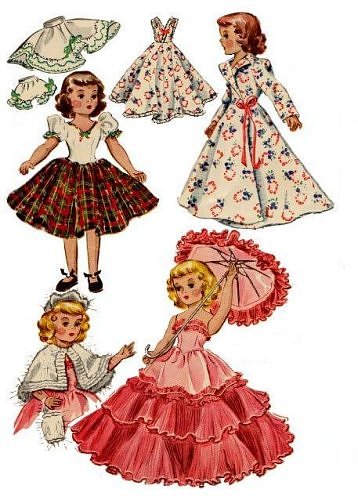 As Denise Van Patten noted in an About.com write-up in January, it is not clear what old dolls are still going to be lawful to sell, distribute or give away under CPSIA, if they cannot be fit into the “adult collectible” exception that covers items so expensive they will be kept out of children’s hands. Soft plastic is only the beginning of the problem. Most older dolls have paint as a component — often only in the rendering of the eyes, but that’s enough to count as a resale red flag under the CPSC’s Feb. 9 guidelines. Hair and dyed fabric, both of unknown composition? Buttons or snaps in the garment, or worse yet, rhinestones? About the only such plaything a thrift shop would not advised to discard under the guidelines would be an unpainted and unvarnished rigid humanoid figurine of raw wood or cast aluminum. If your child does find one of those on a thrift store shelf, she’s welcome to cuddle it all she pleases.
As Denise Van Patten noted in an About.com write-up in January, it is not clear what old dolls are still going to be lawful to sell, distribute or give away under CPSIA, if they cannot be fit into the “adult collectible” exception that covers items so expensive they will be kept out of children’s hands. Soft plastic is only the beginning of the problem. Most older dolls have paint as a component — often only in the rendering of the eyes, but that’s enough to count as a resale red flag under the CPSC’s Feb. 9 guidelines. Hair and dyed fabric, both of unknown composition? Buttons or snaps in the garment, or worse yet, rhinestones? About the only such plaything a thrift shop would not advised to discard under the guidelines would be an unpainted and unvarnished rigid humanoid figurine of raw wood or cast aluminum. If your child does find one of those on a thrift store shelf, she’s welcome to cuddle it all she pleases. - Carol Baicker McKee is a children’s book author and illustrator who commented eloquently (more) on one of our earlier posts about books. Now she has a great post explaining why, although she “never used to think of myself as an activist,” she’s thrown herself into the fight to change this law. As she points out, some things changed, but other things didn’t change, when the CPSC announced a short safe list of presumptively lawful material for children’s products along with a one-year stay on many testing requirements (but not on the banning of goods that flunk the thresholds). She explains why “the stays provide only the illusion of relief,” and that “when the stay ends a year from now, the destructive testing provisions will still go into effect for all children’s products except the small percentage that have been given a reprieve – the costs of that testing will force the remaining small businesses that have limped along this year into oblivion (and the [requirement for] destructive testing will obviously signal the end of one of a kind products).” Read the whole thing.
- In a classic 1850 pamphlet, Frederic Bastiat writes of “what is seen, and what is not seen” when people recommend government solution to a problem. Deputy Headmistress writes of “what Congress didn’t see“. More: Patrick Stephens on a similar theme last month.
- A Georgia newspaper quotes CPSC spokeswoman Arlene Flecha as saying that “her agency will have inspectors make unannounced visits to stores throughout the country and will randomly conduct tests on products.” And if you’re wondering about the CPSC “Internet surveillance project”, in which agents of the commission pose as consumers in order to
trapdetect persons selling forbidden goods on eBay or Craigslist, you can find out more about that here (link fixed now). - At the Heritage Foundation’s InsiderOnline blog, Alex Adrianson has a detail-filled though not lengthy post that would make a good short introduction to the subject to send to (say) a lawmaker.
- Allison Loudermilk at the How Stuff Works blogs takes a look at the law’s heavy impact on thrift stores (“the selection at your local thrift store just got a whole lot slimmer”), while the PTA Thrift Shop of Carrboro, N.C. regrets to inform its customers that it’s out of kids’ resale entirely due to the law; things are only a little better in Salem, Ore. Manager Lisa Sonnek of the York, Nebraska Goodwill has pulled all the children’s clothing, toys, furniture, and pre-1985 books, in accord with policy from above, but has put aside “some clean children’s clothing, in anticipation of the policy being modified in the near future”. Dunno – that might depend on Henry Waxman’s heart melting or something.
*Although numerous online sources report as fact a Montpelier Barbie “ban”, commenter Barb says it’s far from clear that the reports have much of a factual basis.

